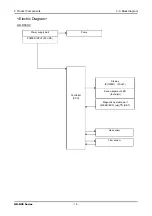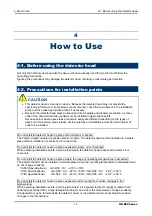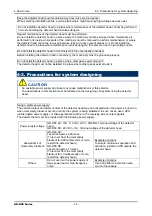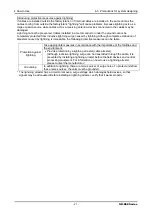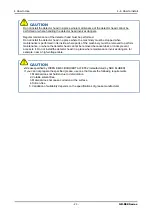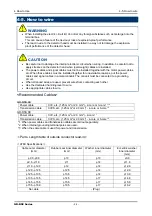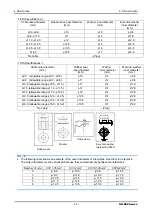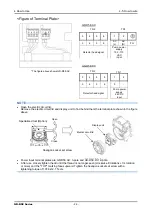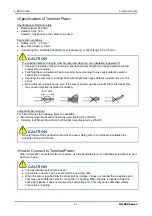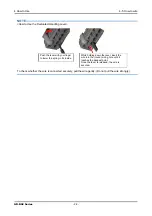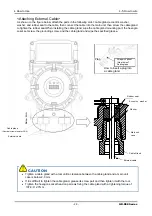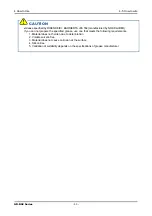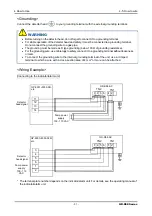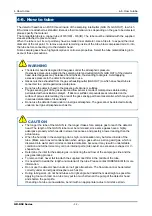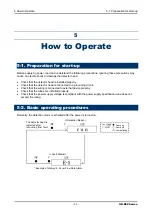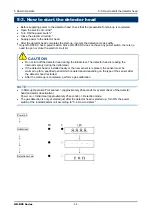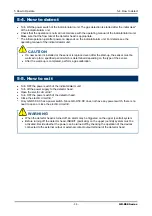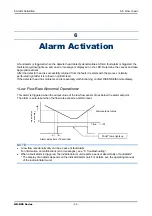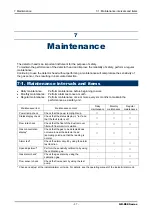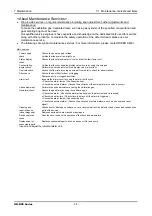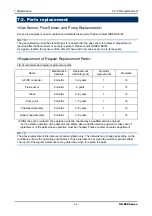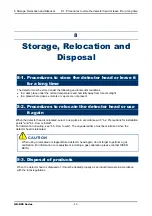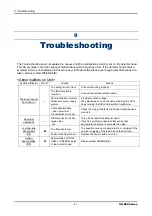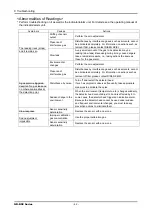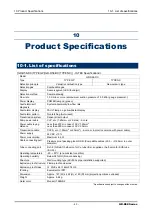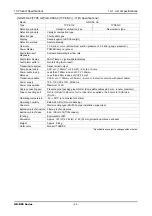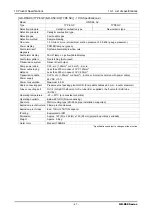
4 How to Use
4-6. How to tube
GD-D58 Series
- 32 -
CAUTION
The longer the tube of the GAS IN is, the longer it takes for a sample gas to reach the detector
head. The length of the GAS IN tube must be minimized, since some gases have a highly
adsorptive property which results in slower responses, and possibly a lower reading than the
actual value.
When the humidity in the sampling point is high, condensation may be formed inside of the
tube. (Make sure to avoid condensation when using a gas such as a strong acid gas, which is
dissolved into water and corrodes contacted materials, because it may result in undetectable
condition and furthermore may corrode internal parts.) Also avoid an excessive U-shaped or V-
shaped tube.
Determine the inlet for the sample gas, considering the air flow of the sample gas line and the
gas generating process.
To remove dust, never fail to attach the supplied dust filter in the middle of the tube.
It is needed to decide the length and material of the tube. Please contact RIKEN KEIKI for more
information.
Do not use the detector head under an inert gas atmosphere. The flow rate cannot be detected
correctly under an inert gas atmosphere such as He.
During tubing work, do not bend tubes at a right angle but install them as straight as possible.
Applying too much load on a tube may put too much strain on the pump of the detector head
and shorten the pump life.
If bending of a tube is unavoidable, bend it with an appropriate radius to minimize strain.
4-6. How to tube
The detector head has an Rc1/8 thread inside of the sampling inlet/outlet (GAS IN, GAS OUT), to which
BS unions are attached as standard. Because their material varies depending on the gas to be detected,
please specify the material.
The compatible tube is a copper tube of
Φ
8 (OD) -
Φ
6 (ID). The tube must be installed with the supplied
sleeves attached to prevent a leak.
When the tube is cut, its cut point may have a smaller inner diameter. Use a file etc. to expand the inner
diameter of the cut point. To remove cut-dust remaining inside of the tube, blow compressed air etc. into
the tube before connecting it to the detector head.
Some sample gases have highly adsorptive or corrosive properties. Select the tube material taking into
account these precautions.
WARNING
The detector head is designed to draw gases under the atmospheric pressure.
If excessive pressure is applied to the sampling inlet and outlet (GAS IN, GAS OUT) of the detector
head, detected gases may be leaked from its inside, thus leading to dangers. Avoid applying
excessive pressure to the detector head while in use.
Gases must be exhausted from the gas exhausting outlet (GAS OUT) to which an exhaust tube is
connected, to a point regarded as a safe place.
Do not use the detector head in the presence of silicone or sulfides.
The gas sensing part of the gas sensor and flow sensor is made of metal porous sintered alloy
permeated with an oxidation catalyst. If silicon or sulfide compounds are accumulated on the
surface of porous sintered alloy, the area of the gas sensing part becomes smaller, which may result
in serious deterioration of its sensitivity.
Do not use the detector head under an inert gas atmosphere. The gas cannot be detected correctly
under an inert gas atmosphere such as He.

